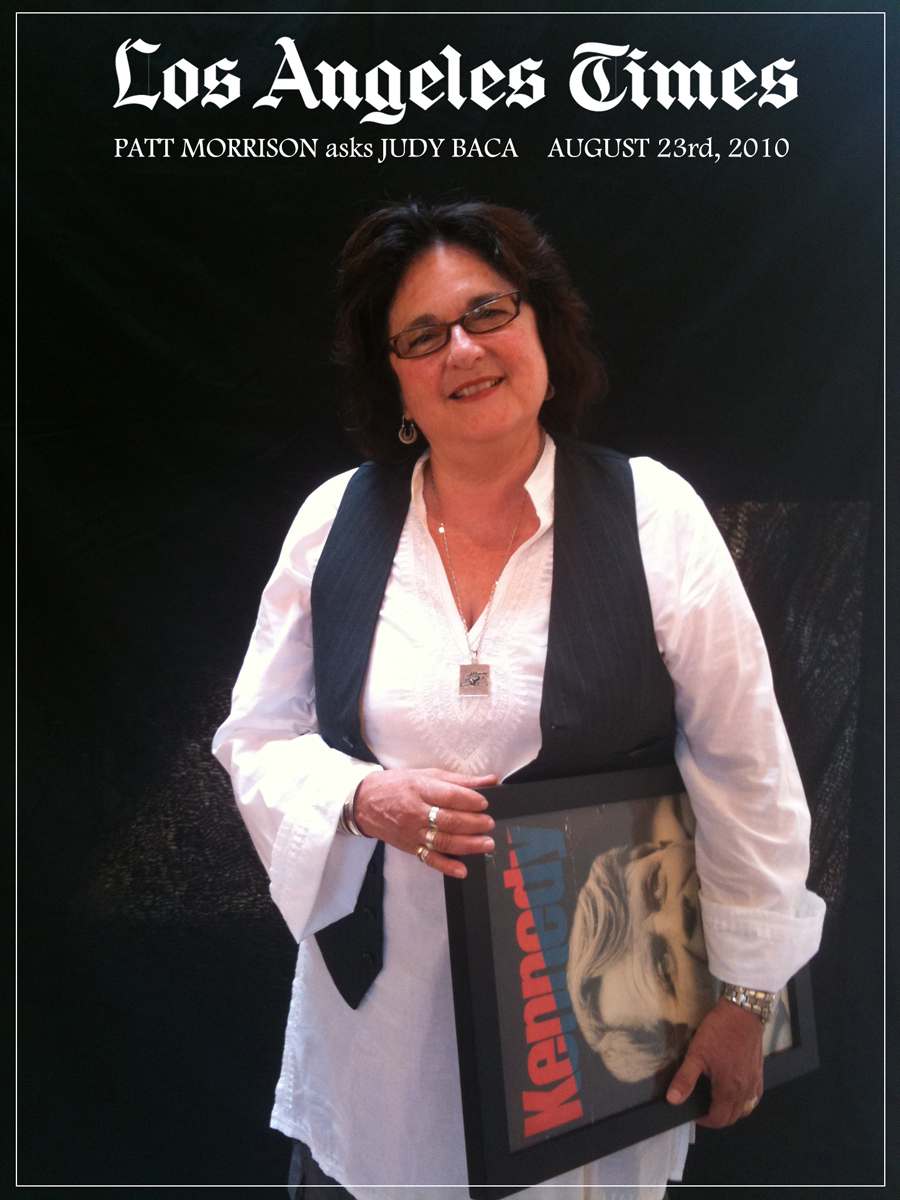Judy Baca and Tiny Ripples of Hope
On June 5th, 1968 Robert F. Kennedy was shot and assassinated in the food-service pantry next to the ballroom of the Ambassador Hotel after having won the California Primary. The Ambassador Hotel, located on Wilshire Boulevard at mid-city, is being converted into the new RFK LEARNING CENTER for K-12. The school’s media center, formerly the ballroom, will be the sight of Judy Baca’s latest work: a two-mural memorial to RFK, a Senator who was revered as a leader of the ideals of hope and compassion and an advocate for the equality of all people. The two murals will be unveiled in September 2010.
In the mural Seeing Through Others Eyes, a lotus blossom determines the composition of the mural both formally and conceptually. Each petal represents one of the issues facing society that Robert F. Kennedy deemed most important: Environment, Intolerance, Poverty, Education, Health, and War. We see these things through different eyes; the eyes of a soldier, a woman and her ailing mother, a poverty stricken child. At the center of the blossom sit two enlightened men: Kennedy breaking bread with César Chávez after Chávez’s 36-Day Fast for Life. Juan Romero, the busboy who cradled Kennedy after he was shot, is depicted to the left of Kennedy. While one million people march in the background lead by Dolores Huertas, a legendary figure in the labor movement in this country. She co-founded the United Farmworkers of America, which plays a major role in organizing opposition to proposed immigration reform legislation.
This Interactive Digital Mural will be seen as one whole and each section will be a whole composition and able to be independently viewed. The entire work will incorporate an interwoven narrative in three layers, which consist of:
First Layer: Represents “The Land” – El Camino Viejo created by Tongva feet and hoofs of oxen evolving into what became known as Wilshire Blvd. and the first thorough way for autos in Los Angeles on which the Ambassador Hotel would become a major landmark.
Second Layer: Represents the People and Historical Events in Los Angeles – 1921 to 1968 – particularly as they relate to the full spectrum of ethnic communities in Los Angeles.
Third layer: Represents Robert F. Kennedy’s narrative that leads him through his life to the primary election victory celebration in Los Angeles. We will focus particularly on his views about poverty, the Vietnam War, education, health care, intolerance and the environment
Seeing Through Others Eyes (12′ x 55′) Final Version

Tiny Ripples of Hope (12′ x 55′) Final Version

The concept of the panels is that they are a sequential work of art, which can be viewed as one mural or as individual vignettes. While the mural is to be seen daily by children, it is not strictly a children’s work of art, but a public artwork that is in the tradition of the WPA and the Great Mexican Mural Tradition of the 20th century- works of art that are meant to last for 100’s of years and of the highest quality and can be studied by children for generations to come.
Movie on the installation of Tiny Ripples of Hope
“Tiny Ripples of Hope” Mural Installation by Judy Baca/SPARC from SPARC Murals on Vimeo.
